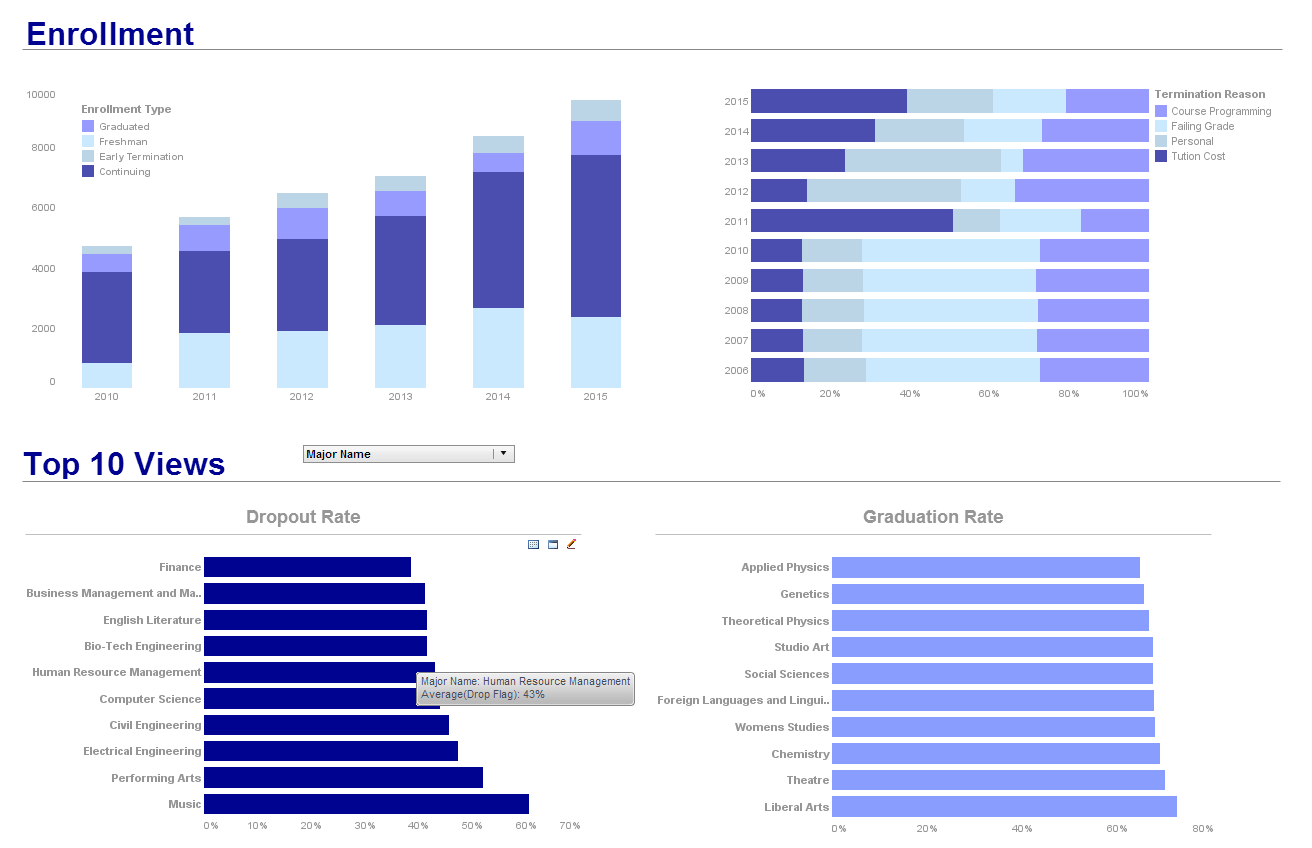The Agile BI Concept
This is the continuation of the transcript of a Webinar hosted by InetSoft on the topic of "Analytics and Agile BI" The speaker is Abhishek Gupta, product manager at InetSoft.
Those are the companies that are going to succeed and win in the current environment. So now this agile BI concept, what’s really behind it? What’s really tangible or actionable behind it?
If you look at what was it taking for companies to survive in the last decade, and I see a very interesting trend that in all the decades proceeding the last one, typically on average about a third of Fortune 1000 companies churned, whether they merge or they go bankrupt or they change their existence to another way, shape and form, but about a third have churned.
In the last decade that formula turned upside down, and about two thirds, actually a little more than two thirds of the companies churned so if you look at who is left this, and you find some very interesting results. So for any of you who has ever gone to business school, I am sure so you remember this book. It is a great research book about what it takes it to be great, what it takes to go from a good company to a great company.
But this may have worked in the 1990s and early 2000s, but it’s not really working well these days. Just take a look at what happened to all the companies mentioned here.
Bankrupt, disrupted, absorbed, involved in a scandal, received government assistance etc., and you know as a matter of fact if you invested in these companies your portfolio would have underperformed S&P 500. Other classical business school texts are all about discipline. Focusing and being disciplined is what we thought was going to be a key attribute to business success.
| #1 Ranking: Read how InetSoft was rated #1 for user adoption in G2's user survey-based index | Read More |
Business Flexibility Is Key
It’s still partially true, but it’s absolutely not enough as you can see. Some of the companies mentioned in this book are underperforming the market. So with that in mind we ask ourselves a hard question. We looked around. We became convinced that it’s really business agility, business flexibility, the ability to react to customers on a dime, not waiting for a week or longer to make a move.
There are no more long cycles that we were used to in IT, but really it is reacting on a dime to customers’ demands. That’s what kind of makes a difference. And once you take the next step and start exploring this business agility concept the analysts found that their clients, people that they interviewed by phone, they intuitively agreed with us, but they found the concept of agility a bit confusing, a bit amorphous to very well define.
So the analysts researched how to define it, and now for the first time they actually tangibly and objectively and quantifiably measured business agility. They now talk about these ten dimensions of business agility. I am sure you will recognize all of them. What’s really important to keep in mind for the second part of my presentation is that about a third of business agility capabilities directly rely and depend on business intelligence or information management.
As you can see BI and analytics have been called out here explicitly in the processes and then knowledge dissemination, market responsiveness, all of this very largely depends on BI infrastructure, architecture, deployments, applications etc. So we can safely say that a key part to business agility relies on BI and information management.
So what do they do with these dimensions? Well they asked companies in interviews or in internal audits or got the information from publicly available sources. They asked them questions or profiled these companies on two attributes of business agility. For every one of these ten dimensions that I just mentioned they tried to identify how well aware all these companies are that these are agility indicators.
 |
View a 2-minute demonstration of InetSoft's easy, agile, and robust BI software. |
They asked them, or they profiled them on how well can they execute on these agility dimensions. And when they plotted the results on this two dimensional chart once again you see the high performing businesses on the right there. They are businesses growing faster than 15% year over year, and surprise, you see a direct correlation between higher levels of agility maturity, which means better awareness, better ability to execute on these business agility dimensions for high performing businesses on the right.
| Previous: Analytics and Agile BI |


